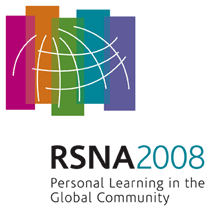
Abstract Archives of the RSNA, 2008
Timothy Roberts PhD, Presenter: Nothing to Disclose
J. Christopher Edgar PhD, Abstract Co-Author: Nothing to Disclose
Deborah M. Zarnow MD, Abstract Co-Author: Nothing to Disclose
Susan Levy, Abstract Co-Author: Nothing to Disclose
To evaluate the role of magnetoencephalography (MEG) n the evaluation of patients with autism spectrum disorders (ASD) to determine if the spectral, temporal and spatial resolution of this modality offers insights into abnormalities of auditory and language processing.
30 subjects (6-15yrs) with diagnoses of ASD (with or without concomitant language impairment) and age-matched typically-developing subjects underwent MEG studies using a 275-channel biomagnetometer. Auditory stimuli were presented to the subjects without task demands. Stimuli included tones of differing frequencies, tone pairs in rapid succession (inter-stimulus-interval 150ms), “oddball” paradigms of streams of tones or vowels (with a 15% “oddball” occurrence – e.g. an /u/ in a stream of /a/’s) and stimuli spanning an acoustic continuum between percepts of the vowels /u/ and /a/. MEG data was collected over the whole head and analyzed in terms of its spatial source (using a beamforming algorithm), temporal characteristics (using ms resolution) and spectral power fluctuations (focusing on alpha, beta and gamma bands).
MEG recording was feasible in 80% of subjects. Main findings include localization to superior temporal gyrus (in both ASD and TD), diminished range of evoked response latencies in children with autism as stimulus frequency was varied from 100-1000Hz) – typically developing children exhibit an M100 latency range of ~40ms for such differing stimuli; this was muted to ~20ms in ASD. For rapidly presented stimuli, evoked response amplitudes to the second tone were reduced in children with ASD; detection of the oddball token in a stream of stimuli was delayed (~50ms) in children with ASD. Abnormal patterns of gamma oscillation (predominantly lower intensity) were observed in superior temporal gyrus of children with ASD.
The spectral and temporal sensitivities of MEG in addition to its source localizing capabilities offer intriguing insights into the neural dysfunction of auditory processing systems in children with ASD. These observations may underpin the subsequent language and communication impairment which are phenotypic characteristics of these disorders.
Spectral and temporal resolution capabilities of MEG offer a novel approach to neuropsychiatric disorders such as autism spectrum disorders, with functional rather than structural lesions.
Roberts, T,
Edgar, J,
Zarnow, D,
Levy, S,
Evaluation of Autism Spectrum Disorders Using Magnetoencephalography. Radiological Society of North America 2008 Scientific Assembly and Annual Meeting, February 18 - February 20, 2008 ,Chicago IL.
http://archive.rsna.org/2008/6022462.html

